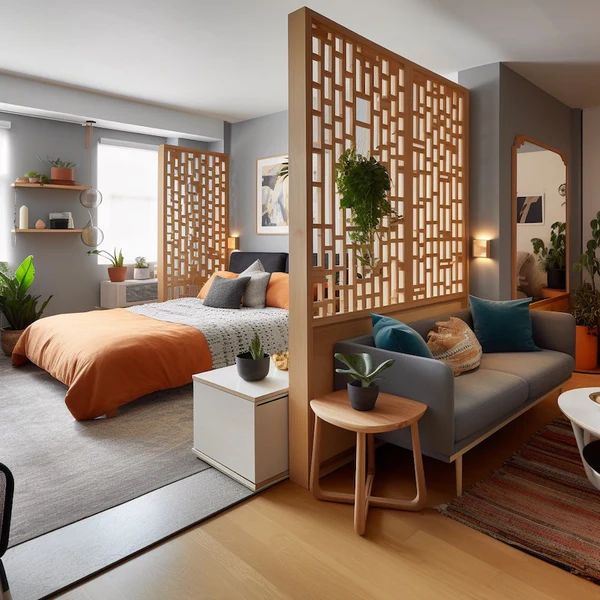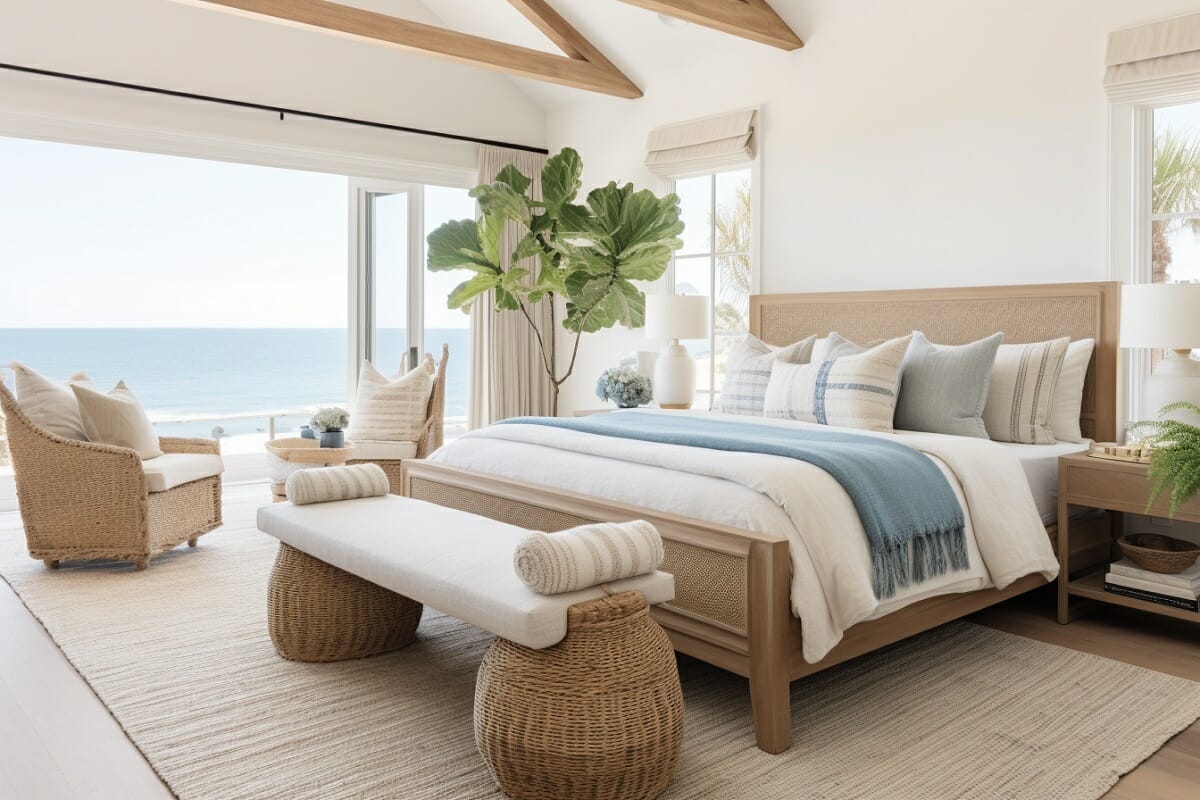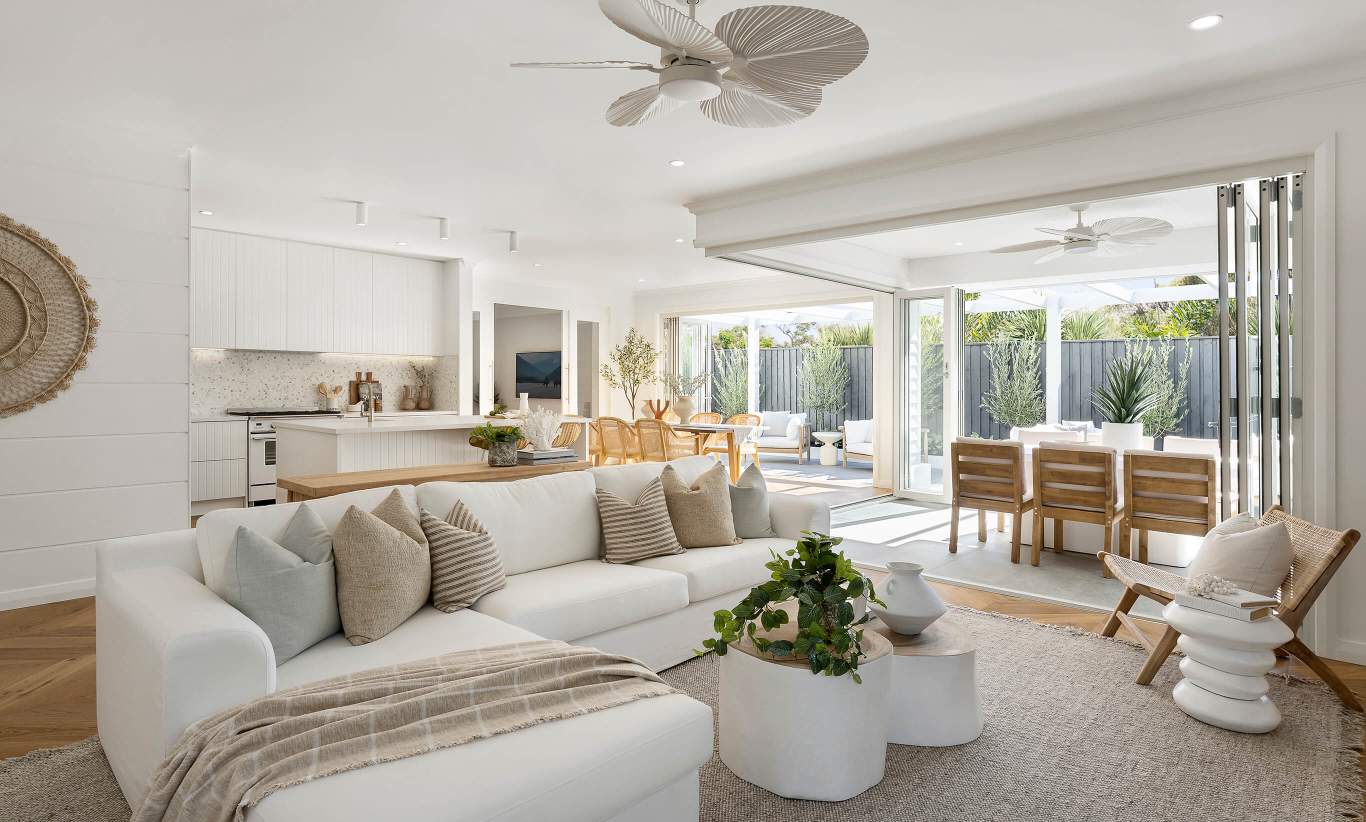When Mark and Lily first moved into their loft-style apartment, they were excited about the spacious, open-plan layout. It felt modern and airy, perfect for hosting friends or relaxing after a long day. But soon after, they began to notice some challenges. Their living room felt too exposed, and the dining area blurred into their workspace, leaving them feeling unorganized and overwhelmed. With the couple working from home, it became clear that they needed more defined spaces for different activities. That’s when they turned to room dividers as a solution. Instead of investing in expensive renovations or new walls, they found that a few stylish room dividers transformed their space. Now, their apartment is sectioned into cosy, functional areas—without sacrificing the open feel they loved.
Like Mark and Lily, many homeowners and renters are discovering the versatility and impact of room dividers. Whether in a compact studio apartment or a large open-concept home, room dividers can help you create distinct zones for work, relaxation, dining, or entertainment—all while adding a decorative touch. The possibilities are endless, from folding screens to sliding panels and bookshelf dividers. This article explores how room dividers can maximize your space, offering practical and stylish solutions for any home.
The Growing Popularity of Open-Plan Living—and Its Challenges
In recent years, open-plan living spaces have become increasingly popular. According to the National Association of Home Builders (NAHB), 84% of new single-family homes in 2021 featured open-plan layouts in the kitchen, dining, and living areas. This trend offers a modern, spacious feel that many homeowners crave, making spaces appear larger, brighter, and more connected.
However, with the rise of open-plan homes has come new challenges—especially for those who work or study from home. The 2023 U.S. Remote Work Survey by Statista showed that 39% of Americans continue to work from home at least part-time, a significant increase from pre-pandemic levels. As homes become more multifunctional, the need for defined spaces has grown. Homeowners and renters are now seeking ways to create more privacy, sound control, and organization in these open layouts without losing the flow and openness they initially loved.
This is where room dividers come into play. Rather than building permanent walls, dividers provide a flexible, cost-effective solution to create separation between different home areas while maintaining the openness people appreciate.
Types of Room Dividers: From Practical to Decorative
Many types of room dividers are available, each serving different functions depending on your needs and design preferences. Here are some of the most popular options:
1. Folding Screens
Folding screens are one of the most versatile types of room dividers. They are typically lightweight, easy to move, and come in various styles, from minimalist to ornate. Folding screens are great for creating temporary privacy, such as separating a workspace from a living area or providing a changing area in a bedroom.
According to a 2022 survey by Wayfair, 42% of homeowners used folding screens in their home office or living spaces to create flexible partitions without making permanent changes. This flexibility is one of the reasons folding screens remain a popular choice for renters or those who frequently change their home layout.
2. Sliding Panels
Sliding panels are an excellent option for a more permanent or semi-permanent solution. These can be installed on tracks along the ceiling or floor and offer the benefit of sliding open or closed as needed. Sliding panels are often used in larger spaces, such as lofts or large living rooms, to divide the space without fully enclosing it.
The Interior Design Trends Report by Houzz noted that sliding panel dividers grew in popularity by 18% in 2023, particularly in urban apartments and homes with modern or industrial styles. Many homeowners appreciated the sleek look of sliding panels, which can be made from materials like glass, wood, or fabric to match their design aesthetic.
3. Bookshelf Dividers
Bookshelf dividers serve a dual purpose: they act as a functional storage unit and a room divider. These are ideal for studio apartments or open-plan living areas with limited space. By placing a bookshelf in the centre of the room, you can separate the space into distinct zones while adding extra storage for books, plants, or decor.
A study by IKEA found that 58% of urban apartment dwellers used bookshelf room dividers to maximize their storage and floor space. The KALLAX shelving unit, one of IKEA’s most popular items, is frequently used as a room divider in small apartments, demonstrating how versatile and functional this type can be.
4. Curtains or Hanging Dividers
Curtains or fabric dividers offer a soft, flexible way to section off parts of a room. Unlike fixed walls, curtains can be opened or closed depending on the level of privacy or openness you need. They are often used in bedrooms, living areas, or home offices, where you may want to open up the space entirely at times.
According to Statista, 33% of homeowners with small or open-plan homes used curtains or hanging dividers to create temporary privacy in multifunctional spaces. Fabric dividers are famous for their affordability, ease of installation, and the wide range of fabric options that match any interior design style.
5. Plant Dividers
Plant dividers have become an increasingly popular trend for a more natural, organic look. These dividers typically involve arranging tall plants or walls to create a green, living barrier between spaces. Not only do they help divide a room, but they also add texture, colour, and fresh air to the environment.
The Global Wellness Institute reported in 2023 that indoor plants can reduce stress and improve air quality, so 27% of homeowners chose plant dividers when redecorating their living spaces. Plant dividers can be especially beneficial in home offices or relaxation areas, where the calming effects of greenery are most appreciated.
Benefits of Using Room Dividers
Room dividers offer numerous benefits beyond just separating spaces. Here are some of the key advantages:
1. Increased Privacy
One of the main reasons people use room dividers is to create privacy in open spaces. Whether separating a home office, a bedroom, or a living area, dividers allow you to carve out personal zones without building permanent walls. This can be particularly helpful for people who share homes or work in a shared living space.
2. Flexible Space Usage
Room dividers provide flexibility, allowing you to transform a room depending on your needs. In small apartments or homes, one room often serves multiple purposes. With dividers, you can easily switch from a home office to a guest room or a dining area to a living room. According to Apartment Therapy, 44% of small-space dwellers used room dividers to make their spaces more multifunctional.
3. Design and Aesthetic Appeal
Dividers don’t just serve a practical function; they can also enhance the design of your space. Whether you choose a bold folding screen with artistic patterns, a sleek glass panel, or a bookshelf filled with decor, room dividers can become a statement piece in any room. Designers have increasingly incorporated dividers to add texture, colour, or visual interest to their interior design plans.
4. Sound Control
Sound can travel quickly in open-plan spaces, making it difficult to concentrate if you’re working, studying, or just trying to relax. Dividers, especially those made from thicker materials like bookshelves or sliding panels, can help absorb sound and reduce noise pollution, creating a quieter, more peaceful environment.
How Room Dividers Add Value to Your Home
Room dividers not only enhance the functionality of your home but can also add value when it comes to resale. A National Association of Realtors (NAR) study found that homes with flexible, multifunctional spaces—particularly in urban and suburban markets—were in higher demand. Homes that used room dividers or other creative space solutions to make open plans more functional were shown to sell 7% faster than those without such features.
As the need for home offices, workout spaces, and private areas continues to grow, room dividers offer a way to meet these needs without the expense and commitment of a renovation. Buyers appreciate the flexibility and adaptability of these spaces, making room dividers a worthwhile investment for homeowners looking to boost the appeal of their property.
Creative Ideas for Using Room Dividers
Looking for inspiration? Here are some creative ways to use room dividers in your home:
- Create a Home Office Nook: If you’re working remotely and don’t have a separate office, use a bookshelf or folding screen to carve out a dedicated workspace in your living room or bedroom.
- Divide a Shared Bedroom: For siblings sharing a room, use a bookshelf or curtain divider to create a sense of individual space for each child.
- Separate Living and Dining Areas: In an open-plan living room, use a decorative screen or sliding panel to create a more defined dining area, adding privacy and style.
- Build a Reading Corner: Turn an unused corner of your living room into a cosy reading nook by placing a fabric divider or plant wall to create a quiet, secluded space.
Conclusion: The Power of Room Dividers
Like Mark and Lily, many homeowners are discovering the benefits of room dividers to solve the challenges of open-plan living. Whether you need more privacy, better space management, or a stylish way to enhance your home’s design, room dividers offer a flexible, affordable, and aesthetically pleasing solution. With so many options available—from folding screens to sliding panels and even plant walls—there’s a room divider to suit every space and style.












 Afrikaans
Afrikaans Shqip
Shqip አማርኛ
አማርኛ العربية
العربية Հայերեն
Հայերեն Azərbaycan dili
Azərbaycan dili Euskara
Euskara Беларуская мова
Беларуская мова বাংলা
বাংলা Bosanski
Bosanski Български
Български Català
Català Cebuano
Cebuano Chichewa
Chichewa 简体中文
简体中文 繁體中文
繁體中文 Corsu
Corsu Hrvatski
Hrvatski Čeština
Čeština Dansk
Dansk Nederlands
Nederlands English
English Esperanto
Esperanto Eesti
Eesti Filipino
Filipino Suomi
Suomi Français
Français Frysk
Frysk Galego
Galego ქართული
ქართული Deutsch
Deutsch Ελληνικά
Ελληνικά ગુજરાતી
ગુજરાતી Kreyol ayisyen
Kreyol ayisyen Harshen Hausa
Harshen Hausa Ōlelo Hawaiʻi
Ōlelo Hawaiʻi עִבְרִית
עִבְרִית हिन्दी
हिन्दी Hmong
Hmong Magyar
Magyar Íslenska
Íslenska Igbo
Igbo Bahasa Indonesia
Bahasa Indonesia Gaeilge
Gaeilge Italiano
Italiano 日本語
日本語 Basa Jawa
Basa Jawa ಕನ್ನಡ
ಕನ್ನಡ Қазақ тілі
Қазақ тілі ភាសាខ្មែរ
ភាសាខ្មែរ 한국어
한국어 كوردی
كوردی Кыргызча
Кыргызча ພາສາລາວ
ພາສາລາວ Latin
Latin Latviešu valoda
Latviešu valoda Lietuvių kalba
Lietuvių kalba Lëtzebuergesch
Lëtzebuergesch Македонски јазик
Македонски јазик Malagasy
Malagasy Bahasa Melayu
Bahasa Melayu മലയാളം
മലയാളം Maltese
Maltese Te Reo Māori
Te Reo Māori मराठी
मराठी Монгол
Монгол ဗမာစာ
ဗမာစာ नेपाली
नेपाली Norsk bokmål
Norsk bokmål پښتو
پښتو فارسی
فارسی Polski
Polski Português
Português ਪੰਜਾਬੀ
ਪੰਜਾਬੀ Română
Română Русский
Русский Samoan
Samoan Gàidhlig
Gàidhlig Српски језик
Српски језик Sesotho
Sesotho Shona
Shona سنڌي
سنڌي සිංහල
සිංහල Slovenčina
Slovenčina Slovenščina
Slovenščina Afsoomaali
Afsoomaali Español
Español Basa Sunda
Basa Sunda Kiswahili
Kiswahili Svenska
Svenska Тоҷикӣ
Тоҷикӣ தமிழ்
தமிழ் తెలుగు
తెలుగు ไทย
ไทย Türkçe
Türkçe Українська
Українська اردو
اردو O‘zbekcha
O‘zbekcha Tiếng Việt
Tiếng Việt Cymraeg
Cymraeg isiXhosa
isiXhosa יידיש
יידיש Yorùbá
Yorùbá Zulu
Zulu